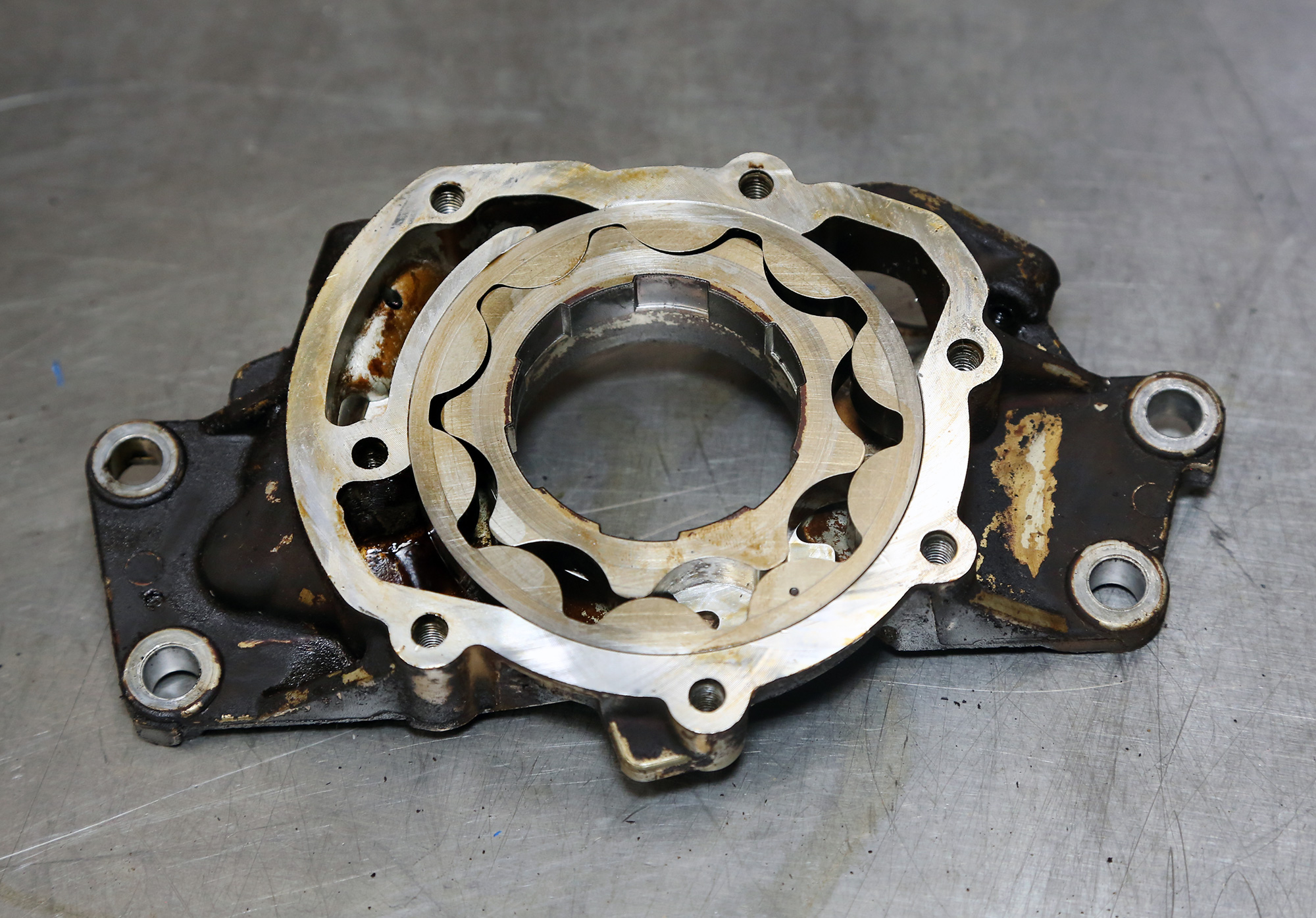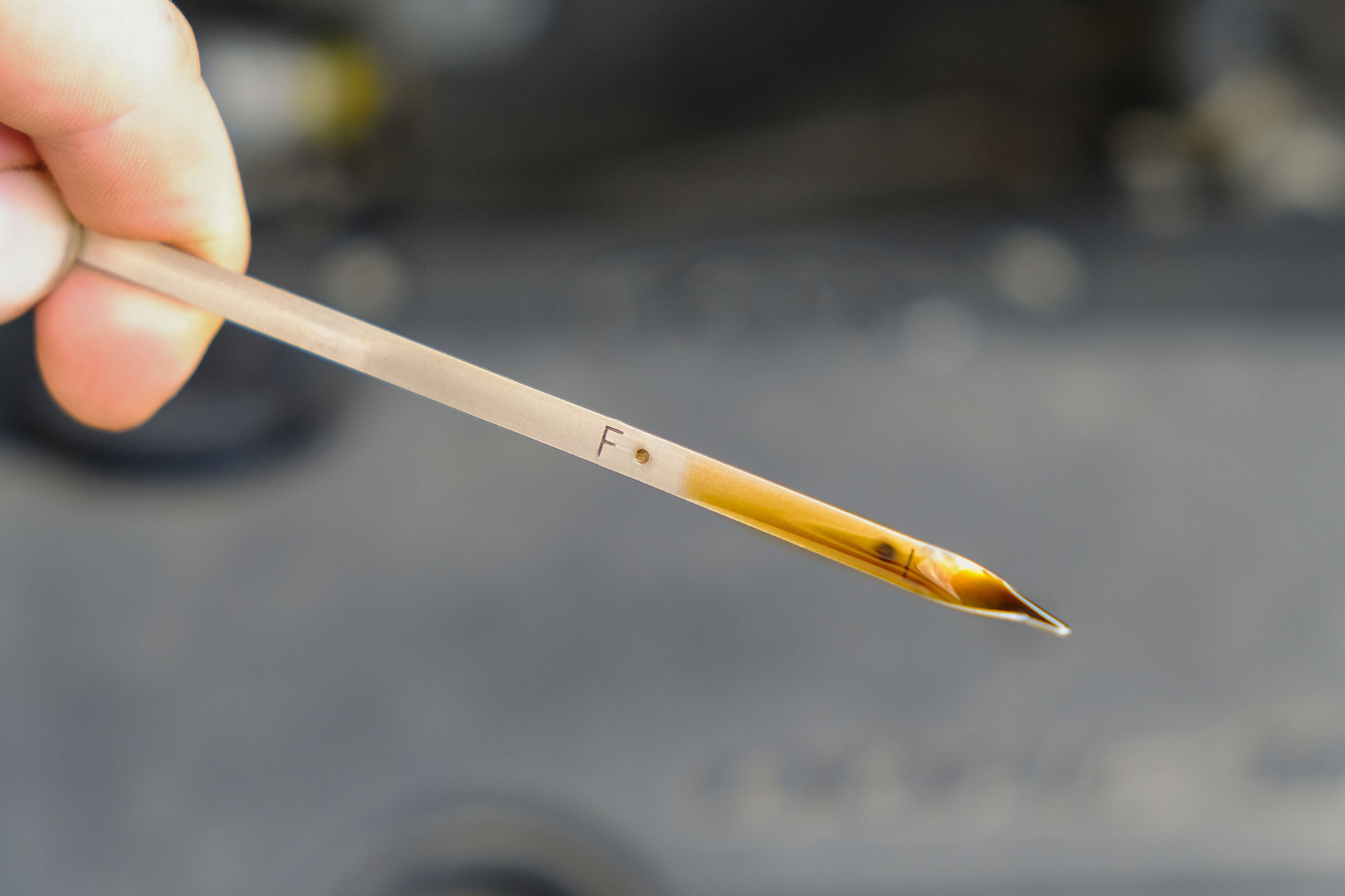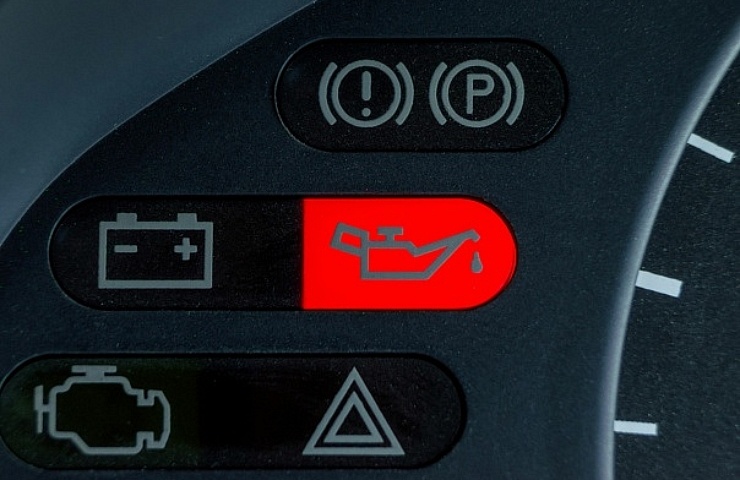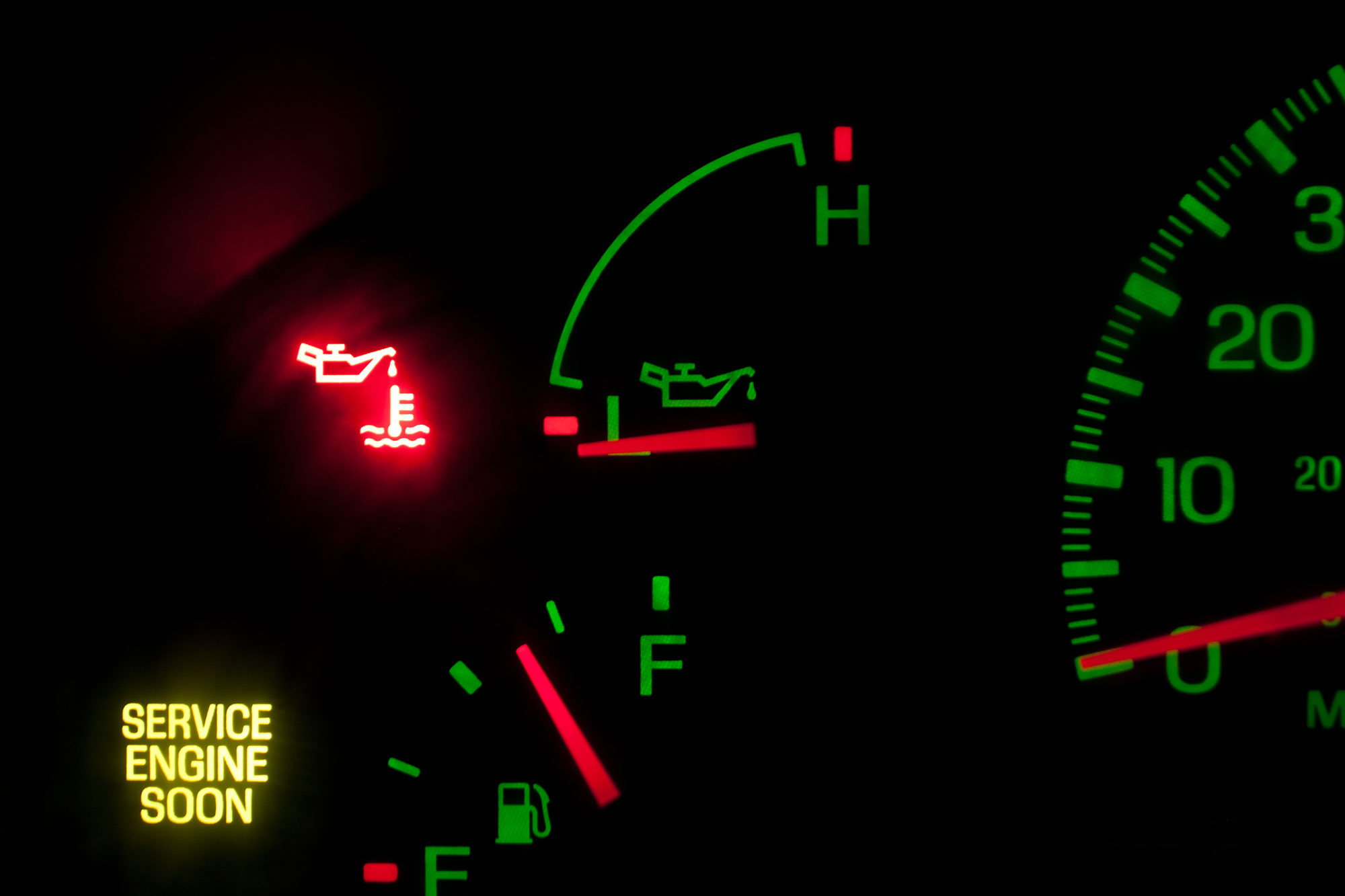Contents
What Does the Oil Warning Light Look Like?
Most modern vehicles have an oil warning light on the vehicle’s dashboard, usually located in the instrument cluster directly behind the steering wheel and close to the speedometer. It typically uses an image of an old-style oil can with a drop clinging to its spout. In most vehicles, the warning light will glow steadily, although the light may flash in some cars.
Some vehicles monitor the oil level and the oil pressure with two separate warning lights, while others combine both functions into one warning light. If monitored by two, here is what each light means:
Oil-level warning light – The oil can will glow yellow when activated, indicating that your engine is running low on oil and needs topping off to bring it into an acceptable operating range.
Oil-pressure warning light – The oil can icon will glow red. Some vehicles may display the words “low oil pressure,” suggesting there are issues with the engine oil pressure, either too low or—in sporadic cases—extremely high.
Read: How to Fix Low Oil Pressure
7 Reasons the Oil Warning Light Can Come On
Low oil level – This is the most common reason for the light to come on. While your vehicle does not use engine oil anywhere near the volume of the gasoline it consumes, it’s normal to burn some oil between changes. That’s why we recommend checking your engine oil level at least monthly and before long drives.
Shop now for motor oilOil leak – An oil leak can occur externally and is commonly identified by a puddle of oil under your vehicle’s engine. However, oil can also leak internally, indicated by a strong burning smell or smoke from under the hood, engine, or exhaust pipe.

That small puddle of oil can mean big trouble.
Dirty or contaminated oil – Over time, as engine oil circulates through and lubricates the engine, it degrades and collects dirt, metal shavings, and particles due to normal engine wear. The oil can become thick and almost tarlike in viscosity and could trigger the oil pressure light.
Blockage in oil lines or oil circulation system – In some cases, especially in older vehicles with high mileage, there can be an accumulation of engine debris and sludge in the oil pan, oil lines, and even the oil filter. Noticeable warning signs of this condition could include dark, carbonlike exhaust smoke and uneven engine performance: sputtering, cylinder missing, poor engine performance, or clunking noises from the engine. Maintaining scheduled oil and filter changes helps prevent oil circulation system issues.
Faulty oil pump – The oil pump circulates the oil throughout the engine to lubricate all the moving parts with a constant level of pressure. An oil pump failure or inconsistent pressure via a stuck pump valve will interrupt the proper oil circulation, resulting in a drop in oil pressure. When this happens, the oil pressure light illuminates, and you might hear unusual noises, such as whining or ticking. An overheated engine may also indicate a faulty oil pump.

Oil pump
Worn-out oil pressure sensor – Your vehicle has an electronic sensor that monitors the oil pressure and notifies the engine control module (ECM) if the pressure drops below a designated threshold. A worn-out pressure sensor can transmit an erroneous signal to the ECM, illuminating a false oil warning or check engine light.
Shop now for oil pressure controlsWorn engine or engine parts – Worn or damaged engine parts can cause oil leaks, causing a drop in oil pressure. A broken piston, oil ring, or damaged or excessively worn bearing seal, especially on engines with high mileage, can be the culprit. This will illuminate the oil warning light and possibly the check engine light. You could also notice unusual issues with the performance of the engine, including frequent engine stalling, rough idle and rough running, a decrease in engine power, a knocking sound, oil-burning smells, and, in extreme cases, complete engine failure.
How to Respond
If the oil warning light illuminates while driving, follow these steps to avoid severe and expensive repair damages.

A car engine oil dipstick level marks.
- Activate your emergency hazard lights and look for a safe, well-lit, preferably level place to park the vehicle.
- Turn off the engine and remove the keys from the ignition.
- Let the engine cool for 10 minutes before opening the hood. This allows the oil to drain back into the oil pan.
- Locate the dipstick and slide it out of its sheath. It will usually have a yellow, orange, or red grab handle. If unsure, refer to your owner’s manual for location.
- Wipe the dipstick clean with a cloth or tissue, then reinsert it and slide it to the bottom of the sheath. Pull it out again and read the oil level.
- There will be two markers on the dipstick, usually an L line for low oil level and a higher one with F for full. The oil level should be located between the two lines. If the oil level is below the L or not showing at all, you will need to add enough oil to bring it up between the two lines.
- Notice the color and condition of the oil on the dipstick. Clean or fresh oil will be an amber or light caramel color. If it’s dark, thick, black, gritty, or milky, you’ll need a complete oil change with fresh oil and a new filter.
- If you were able to top off the oil, restart the vehicle to see if the oil light is still illuminating or if it is already off. If it is off, you can continue driving your vehicle.
- If the oil light is still illuminated after refilling, call your mechanic or arrange a tow truck for repair.
Can You Drive When the Oil Light Is Illuminated?
You cannot drive with an illuminated oil light. Driving with a low oil level or perhaps no oil can cause the engine to seize up and fail, requiring a complete engine replacement. You should immediately call your mechanic for advice and guidance.
After you fix the problem, the light will not reset on its own in most cases. In fact, most modern vehicles have an oil change light designed to let you know, based on the car’s odometer reading, that an oil change is needed. And that light won’t turn off even when the old oil has been drained and fresh oil added.
However, resetting the oil change light is a simple process you can do on your own. Consult your owner’s manual for instructions.






